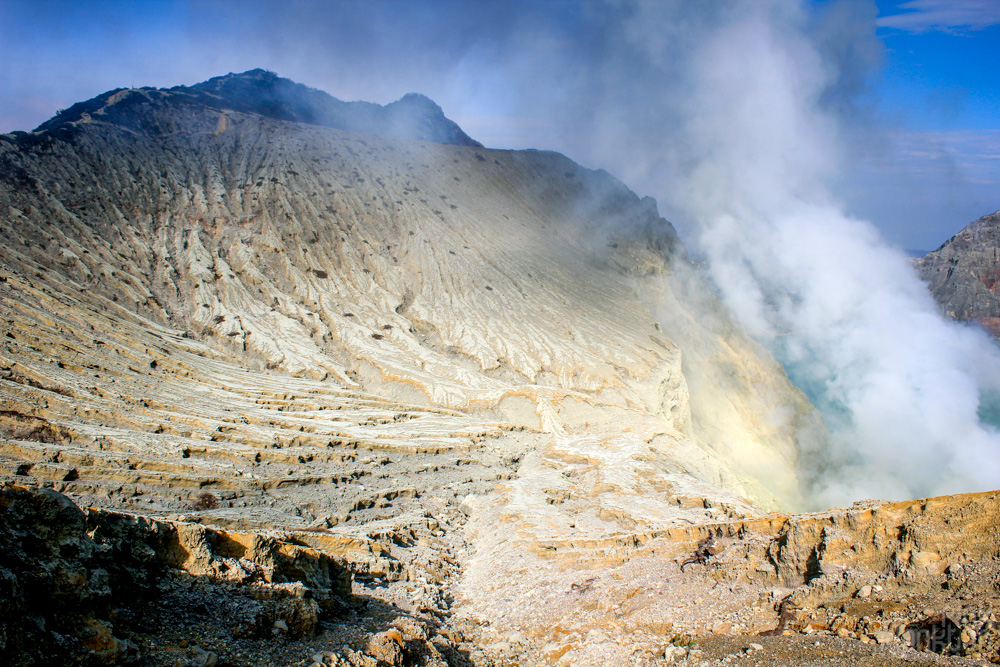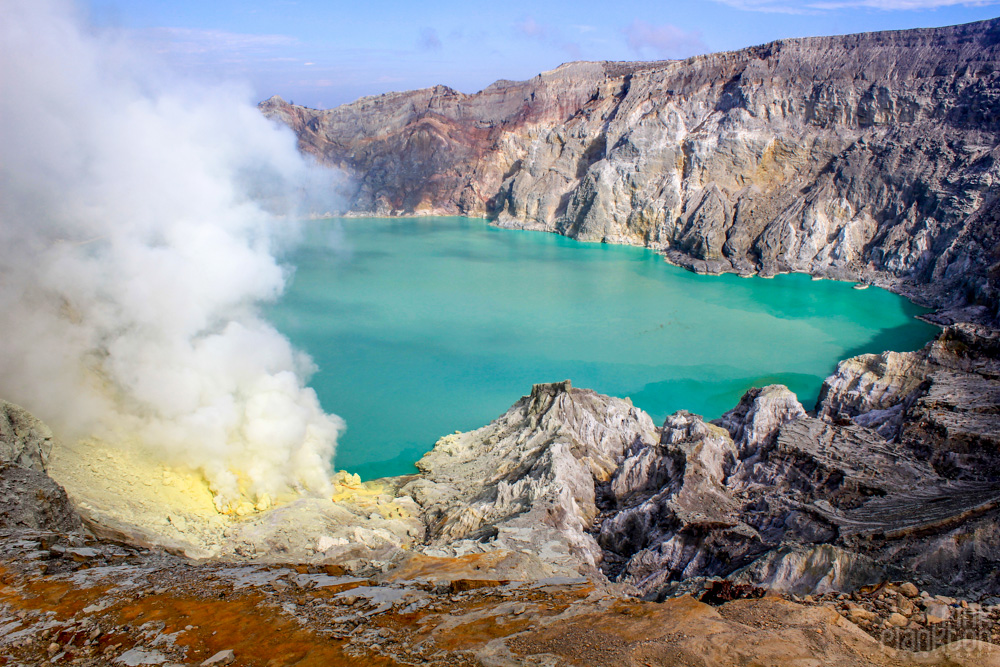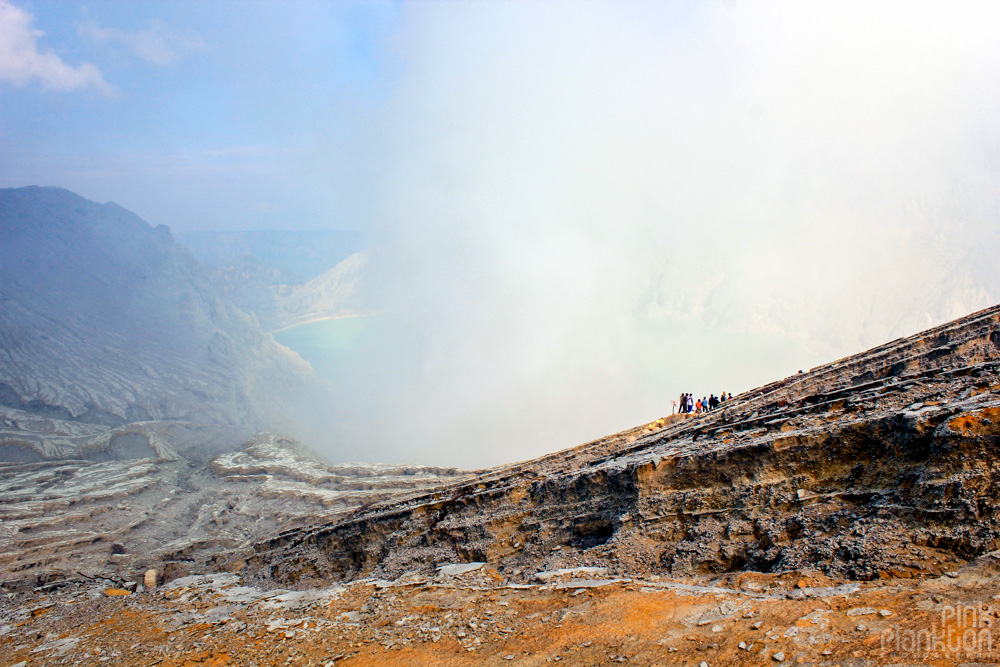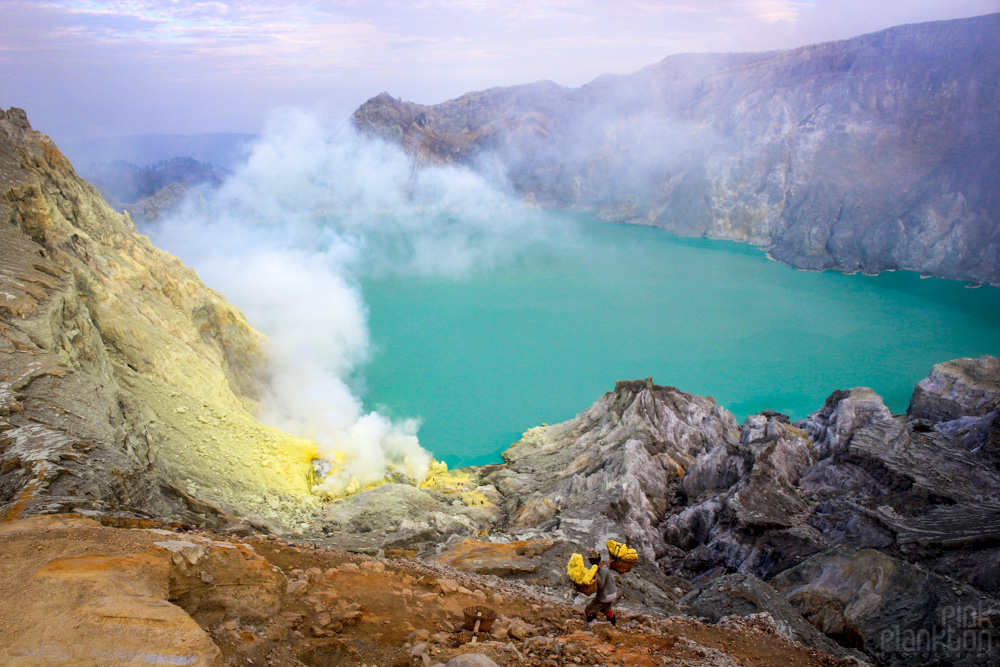
Kawah Ijen, or Ijen Crater, is located in East Java, Indonesia. It is part of a scenic mountain and volcano range. The actual crater is filled with a beautiful blue acid lake. The acidity is caused by large amounts of sulphur deposits (the bright yellow you see in the photos). The sulphur and heat of the volcano also cause the rising smoke, giving the sight a spectacular look.

I had the opportunity to hike up to Kawah Ijen in 2012. This site is definitely one of the most stunning natural landscapes I have ever seen, as well as one of the most remarkable demonstrations of human strength. The beauty of the area speaks for itself. What makes it even more fascinating is the people who work here, the Indonesian sulphur miners.
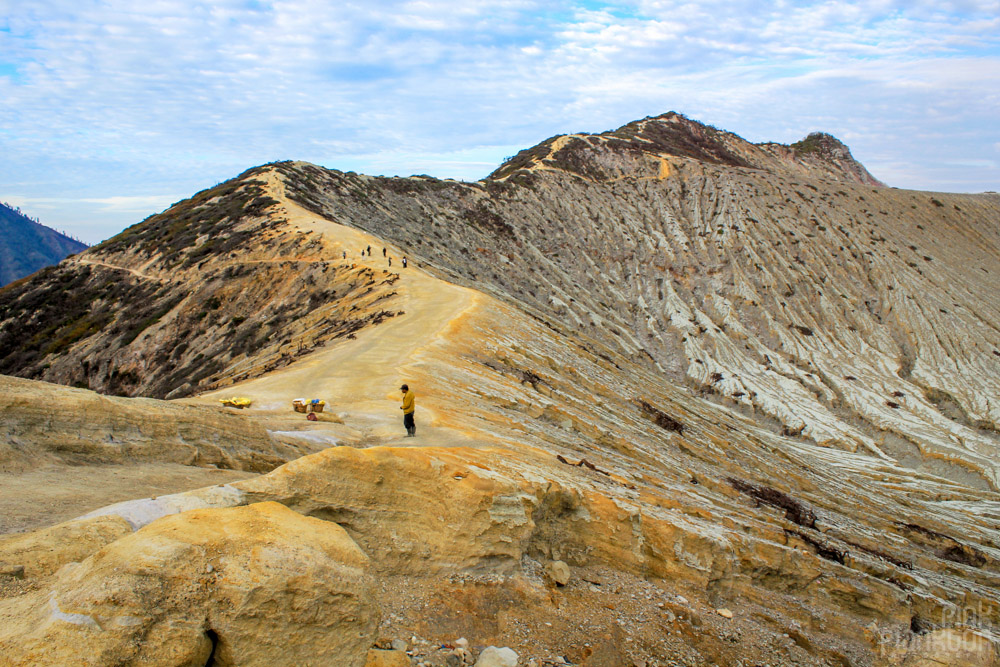

Everyday, these men hike up the mountain, down into the crater, load their baskets with about 80kgs (or more) of sulphur blocks, climb back out of the crater, and back down the mountain. They are paid about $1 for every 10kgs. Most of them do this twice a day, for a total daily earnings of about $16.
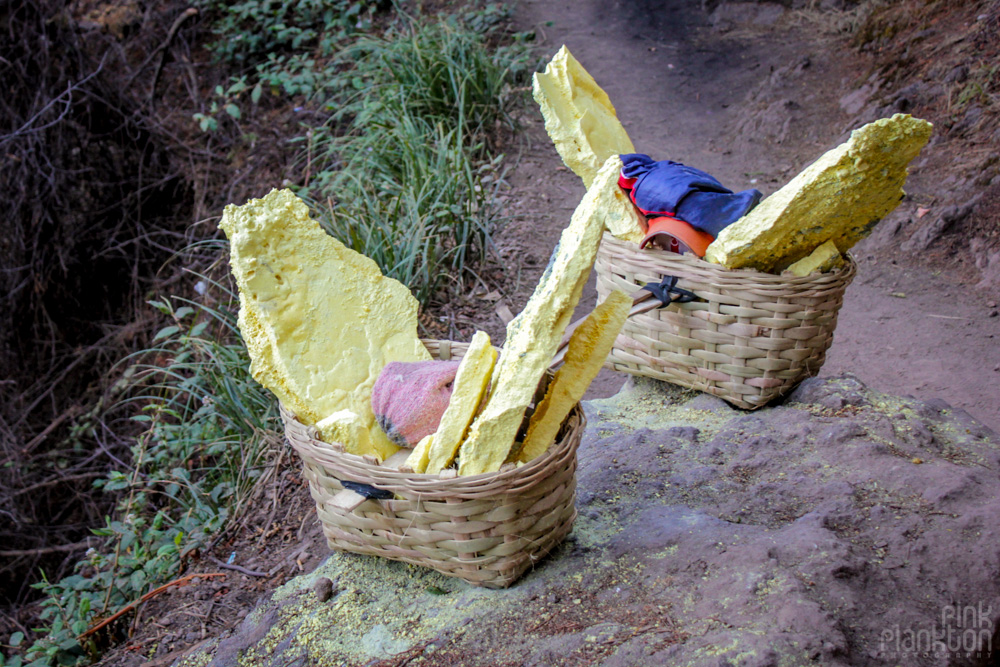

In Indonesia, $16/day is your average wage. But doing what these men go through daily, to earn a living, is unthinkable. The walk up the mountain, one way, took me about 2 hours. These men can do the entire round trip in less than an hour! And that is including carrying the 80kgs of sulphur back on the way down. Of course, some of these men have been doing it for years. They carry the sulphur on their shoulders, in the way depicted. As you can probably imagine, most of them have developed horrible scars and back issues.
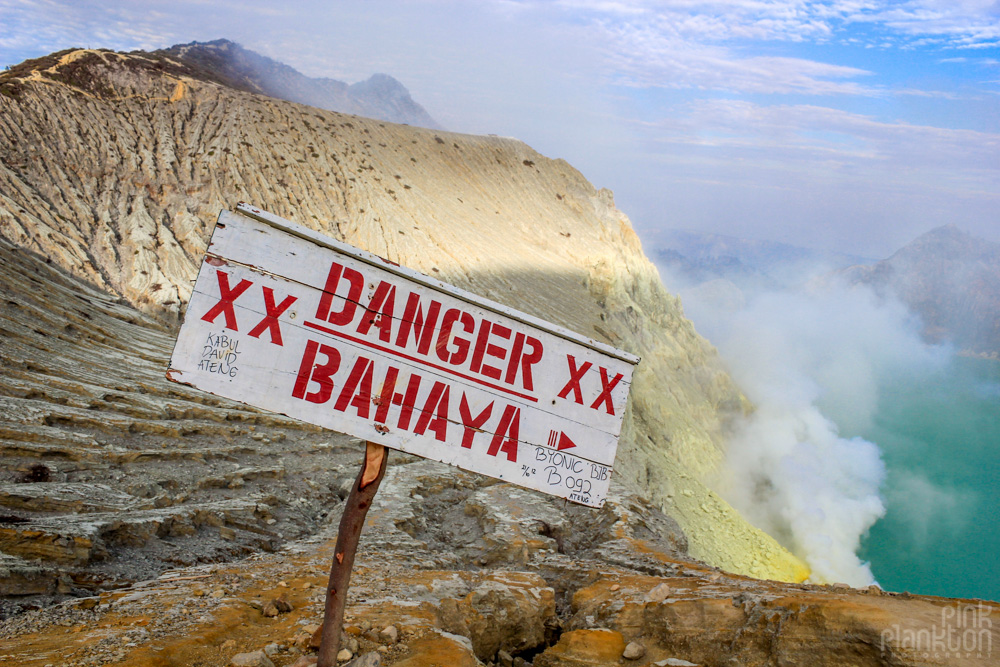
Yet, probably the most dangerous aspect of their job is the sulphur itself. The smoke and fumes down in the crater are very toxic. Most of the miners don't use any sort of gas mask. This will obviously cause some sort of long term damage on their health.
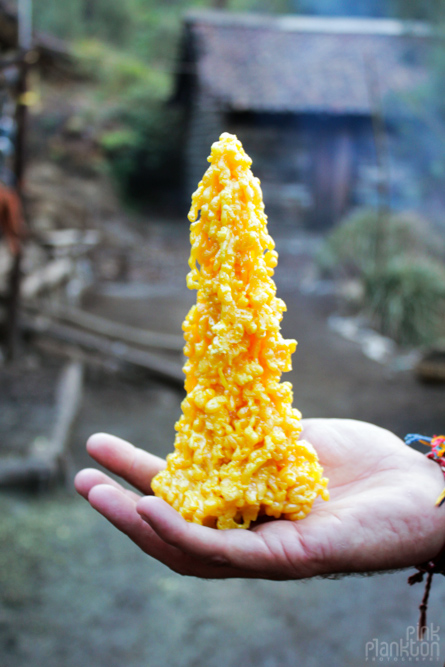
Some of the miners sell ornaments, such as the one depicted above (a block of crystallized sulphur), to tourists along the way, to try and earn a bit of extra cash. A couple of miners who I spoke to didn't seem to mind the dangerous aspects of their job. They were simply happy to be employed and to be able to support their families. All I can say is that witnessing this area evoked an entire range of human emotions.
